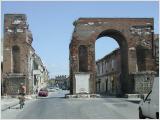3 Regions - one road
Three Regions - one road
Across Campania, Basilicata and Puglia
On the routes of the ancient Romans
Your journey takes you to areas that have remained largely unknown. Who expects the "normal" highlights, such as Amalfi or the Gargano, we have to disappoint them. Rather, the trip is aimed at those who want to discover new things far from mass tourism. The basis of this trip is the Appia Antica, the most famous of all Roman consular streets. Cities formed along its course and countless monuments lined this consular road. Many fell victim to the ravages of time, but what we can still admire gives us insights into the time of the ancient Romans and their brilliant achievements. It is not an archaeological journey, although it contains great monuments from Roman times. but should let you understand a little Roman life with all the treasures that you will admire.
Day 1: arrival
Pick up at the airport in Naples. Then the journey to Caserta goes to your 3 * hotel. Depending on the time of arrival, you should take a first city tour before you take a culinary menu.
Day 2: Benevento and Capua - a road brings wealth
In the morning you drive to Capua and Santa Maria Capua a Vetere, the ancient Capua. Here we encounter one of the largest amphitheaters of the Romans. It is not surprising that a gladiator school was created, which also spawned Spartacus. A little outside Capua are the so-called Carceri Vecchie. Also located on the Appia we encounter another monumental grave, called Canocchia.
After a small lunch, take a city tour of Benevento. There are not many contemporary witnesses of the ancient city, but its structure shows that the poor village was once a thriving city. Here we dedicate the Arch of Trajan and the Church of S. Sophia, our attention emerged under the Longobards.
After this busy day, take a leisurely evening menu at the hotel.
Day 3: From the Hell's Maw to the city of Staufer - Aeclanum to Melfi and Venosa
You leave Capua today to continue your journey via Aeclanum to Melfi. Aeclanum was considered a pit of hell because of its penetrating smell of sulfur and it is easy to imagine that it was considered a passage to hell. Many building elements can still be seen from the remains of the city. After a short trip to this city, the origin of which cannot be explained, but which nevertheless became a flourishing place under Roman rule, we set off for Melfi. Unlike Venosa, it was in the shadow of this city, but it is home to many interesting cultural treasures - not least, it was a city shaped by many fundamental decisions such as the crusades, the Melfish constitutions, celibacy. You will move into your next hotel on Lake Monticchi.
Day 4: Venosa - ancient trade center
The former Venusia was one of the most important centers of trade in the Roman period along the Appia. The most gigantic complex is the S.S. Trinita, who is associated with the unfinished "new church". Immediately next to it you will find the remains of the Roman thermal baths and even some houses. Here you will find a lot to see and experience until lunch break, especially due to the variety of times. In the afternoon we will take a little trip to a cave church, S. Margherita. This millennium-old grotto, formerly used as a shelter for shepherds, houses wonderful frescoes. Among them is probably the only fresco that Friedrich II von Hohenstaufen shows during his lifetime! In the late afternoon you visit the grandiose museum of Melfi in one of the fortresses of Friedrich II von Hohenstaufen. After a short walk through the city, you will return to the hotel. Dinner of course with Lucan specialties.
Day 5: gorges, caves and vastness
In the morning you make your way to Matera. The landscape on this route is characterized by endless expanses, interspersed with willows and karst. A stop in Gravina di Puglia, where there are important rock churches that also served as refuge, the main thing that captivates the city is its great panorama. Passing masseries and vast fields of grain, the Appia leads us to Matera. One of the oldest cities in Europe, a UNESCO World Heritage Site, formerly, until the 1950s, the worst eyesore in Italy due to the Sassi, the rock dwellings, it has now become a popular travel destination. During a city tour you will get to know impressive cultural assets and will surely keep this city in your memory. You will then have an overnight stay in a nearby masseria.
Day 6: Beauties from brilliant days - Taranto and Brindisi
Passing masserias and vast fields of grain, the Appia leads us to Taranto, also known as the “City of the Two Seas”. Once the shining city of Great Greece, it is unfortunately only a reflection of its former beauty. What is still visible remains the beautiful sight as soon as you approach the city. Here you will take a small tour of the city, past the imposing fortress, the remains of a Doric temple and a surprising cathedral, before reaching your next and last location, Brindisi, in the late afternoon.
Day 7: Proud city by the sea - Brindisi
The former splendid city of Brindisi, the splendid end point of the Via Appia in Roman times and a hub for goods traffic with the Orient and the Levant, only allows us to look at both end pillars of the Appia today, of which only one was preserved and the other only a small part. The centuries have largely made the ancient buildings disappear. However, it is worthwhile e.g. the portico of the Templars, the church of S. Giovanni al Sepolcro and, last but not least, a small museum where the original of the capital of the end column of the Appia Antica is exhibited. Since you can admire it up close, the magnificence of Roman art is clearly visible. After visiting the city and having a lunch break, you have free time. You will return to the hotel in the late afternoon.
Day 8: Via Appia Traiana - Egnazia and Ostuni
Egnazia. There you will find precious mosaics such as that of the 3 Graces and part of the Via Appia Traiana. At the beginning of the 2nd century AD, Emperor Trajan had Via Minucia and the coastal road coming from Bari near Egnazia, side streets of Via Appia, expanded as Via Traiana. The archaeological park of Egnazia offers many archaeological treasures for those interested in history. After a lunch break we continue to the so-called "white city", Ostuni.
The entire length of the city is traversed by the Appia Traiana. The houses glow white, only the magnificent buildings and the cathedral remain in their natural stone color. We visit the cathedral at the highest point in the city and enjoy the free time that remains in this picturesque place before returning to the hotel in the late afternoon.
Day 9: Arrivederci Appia Antica
Depending on the departure time, drive to the airport in Bari. They say goodbye to a part of Italy that is so steeped in history and yet so far from the tourist maps.
© Ulla Kastner
Travel date:
05/27 until June 4th, 2022
24.09. until October 2nd, 2022
4 to max. 15 participants
Other travel dates from 4 people and larger numbers of participants can be requested.
Services included:
2 x H / P in a 3 * hotel in Caserta
2 x H / P in a 3 * hotel on Lake Monticchio
1 x overnight stay in a masseria near Matera
3 x overnight stays in a B&B near Brindisi
5 x lunch
8 x dinner
All on-site transfers in minibuses
Permanent German tour guide
Services not included:
getting there
Entrances and drinks
All meals not listed
Private expenses
Price per person. in a double room: € 1,820.00 for 10 people or more
Price in a double room as a single room: € + 200.00
With fewer participants:
Price per person. in a double room: € 2,150.00 from 4 people
Price per person. in a double room: € 1,970.00 from 6 people
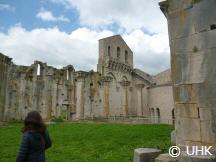
|
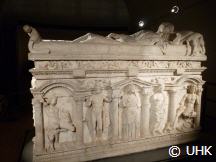
|
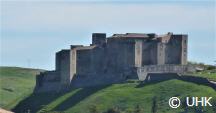
|
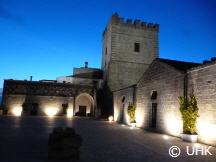
|
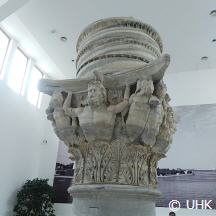
|
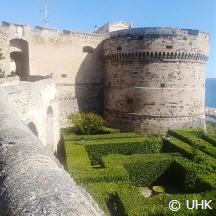
|
